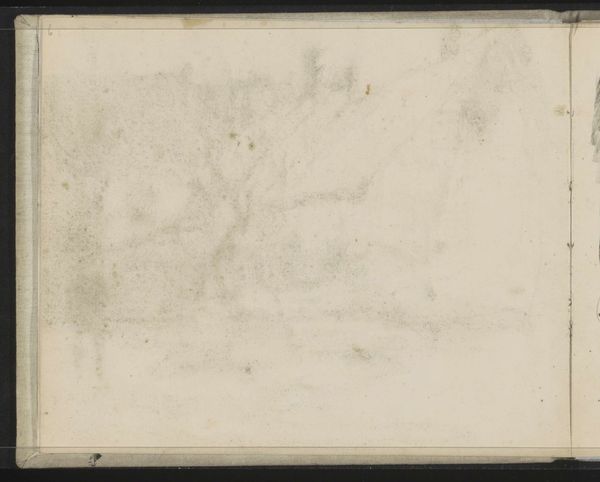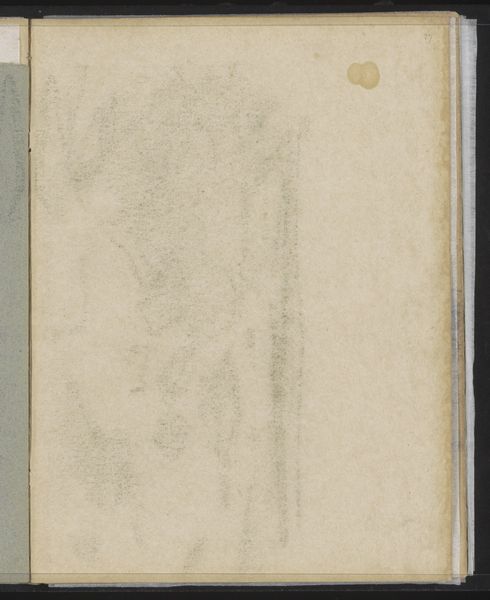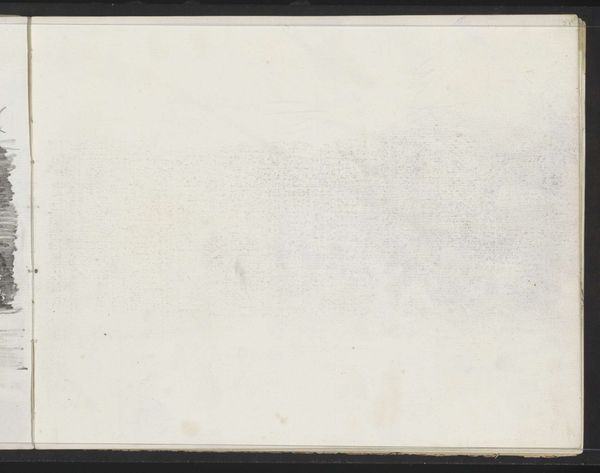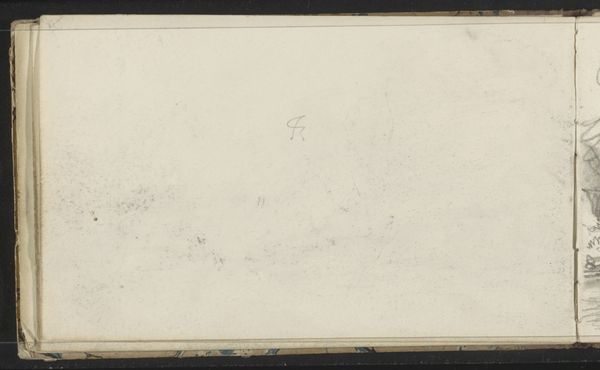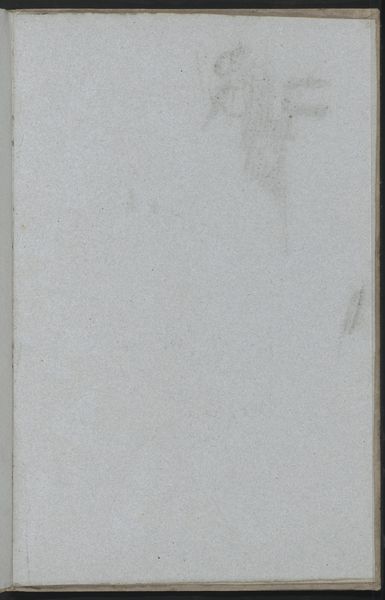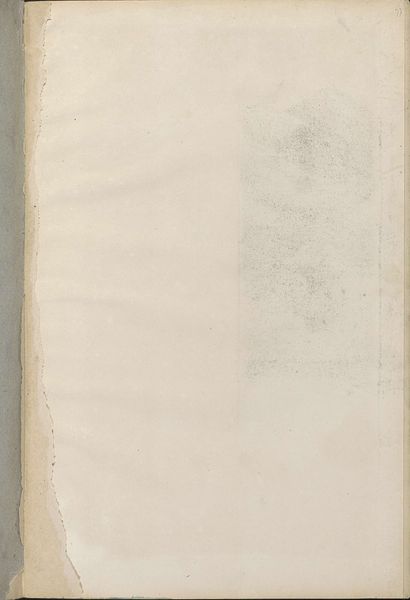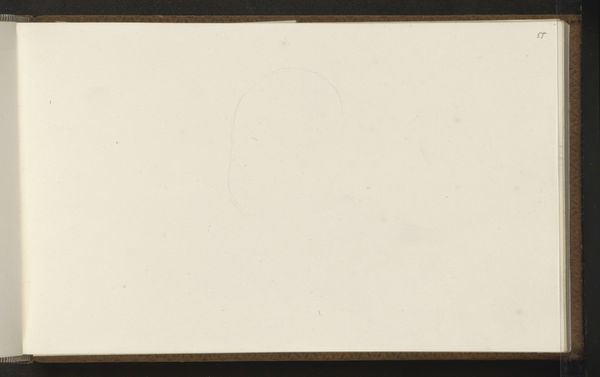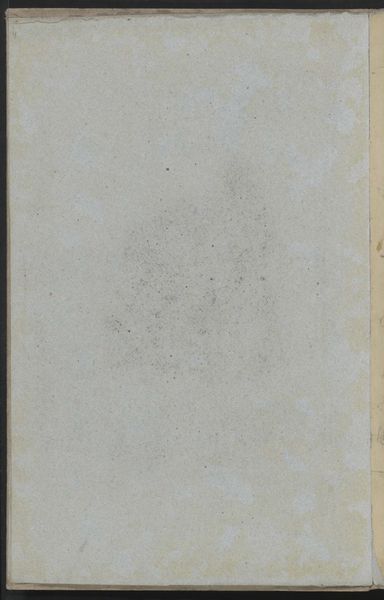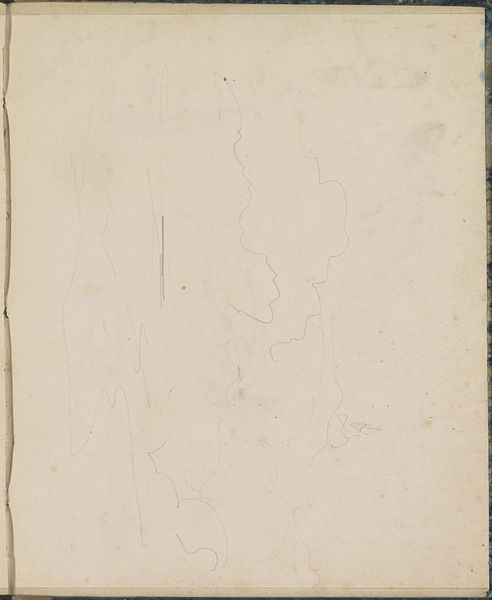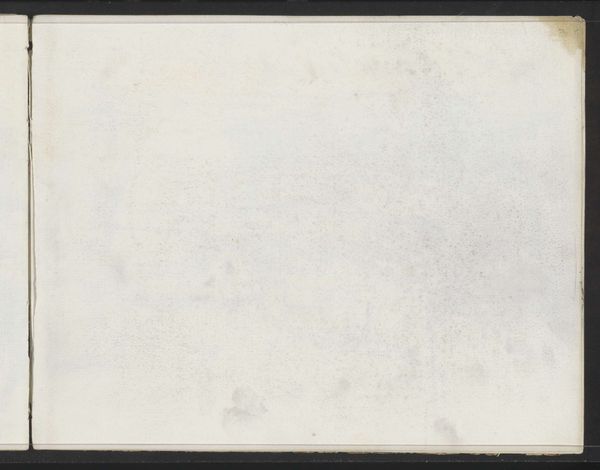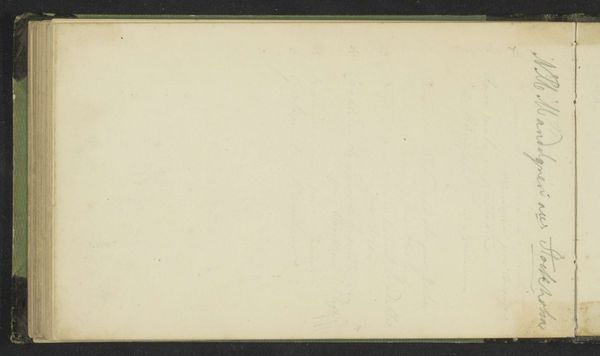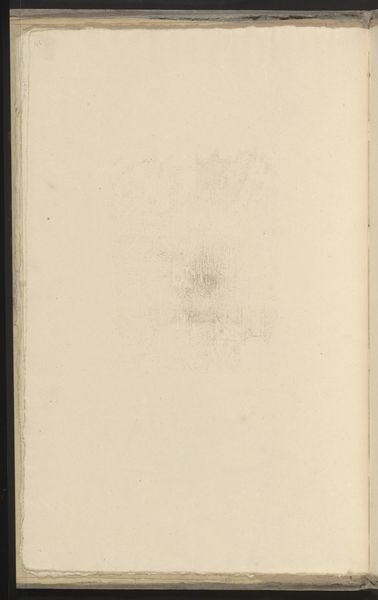
Copyright: Rijks Museum: Open Domain
Curator: Willem Witsen's "Abklatsch van de krijttekening op pagina 77," created somewhere between 1906 and 1909, intrigues me. What catches your eye? Editor: Initially, I'm struck by the delicate tonality, that pale, almost ethereal quality of the paper itself. It evokes a sense of aged fragility. Curator: Indeed, and let's consider the materiality. It’s graphite on paper. These materials speak volumes about artistic production at the time; graphite, being easily accessible, made art more democratic. Editor: Precisely. The artist's hand is very evident, isn’t it? The strokes, seemingly simple, create depth. The light and shadow work in concert—an eloquent statement in a minor key, I might say. Curator: Absolutely, but I’m interested in the process itself, the “Abklatsch,” the transfer. How does this process inform our understanding of Witsen’s broader artistic practice and studio techniques? Was this intended as a finished work or something else entirely? Editor: That's the core of it. Formally speaking, this could be seen as a study, an exercise in capturing the essence of a subject through minimal means. Semiotically, it feels incomplete, yet resolved. Curator: What this sketch perhaps communicates, through its medium, the quick capture and relative portability of graphite and paper, is a move away from the traditional hierarchies present at that time and a move toward new modes of working and production of the artistic process. Editor: I agree. In closing, it’s in these quiet, unassuming works where we sometimes discover the most resonant articulations of artistic intention and perception. Curator: Yes, this intimate piece invites us to consider how readily available and mundane materials open up pathways to new artistic avenues.
Comments
No comments
Be the first to comment and join the conversation on the ultimate creative platform.

